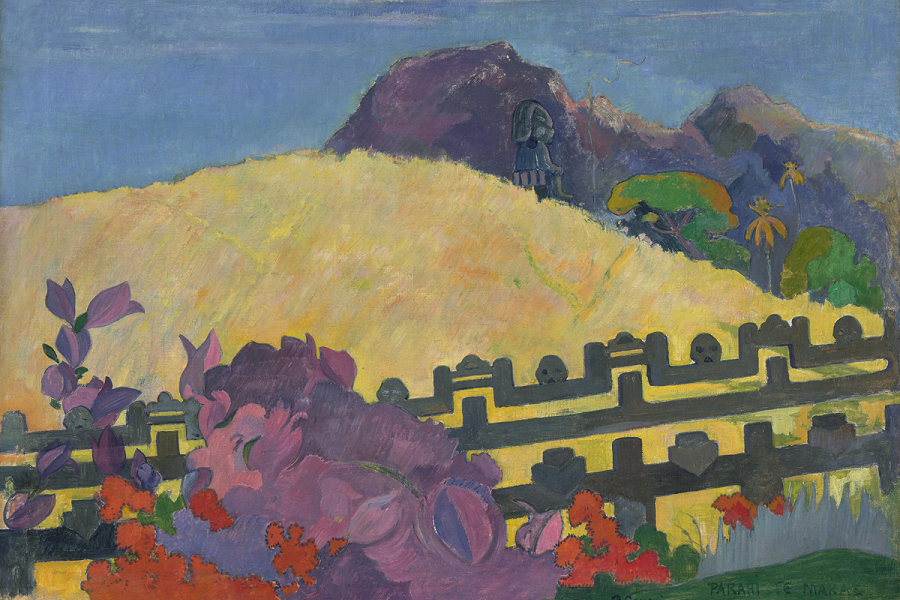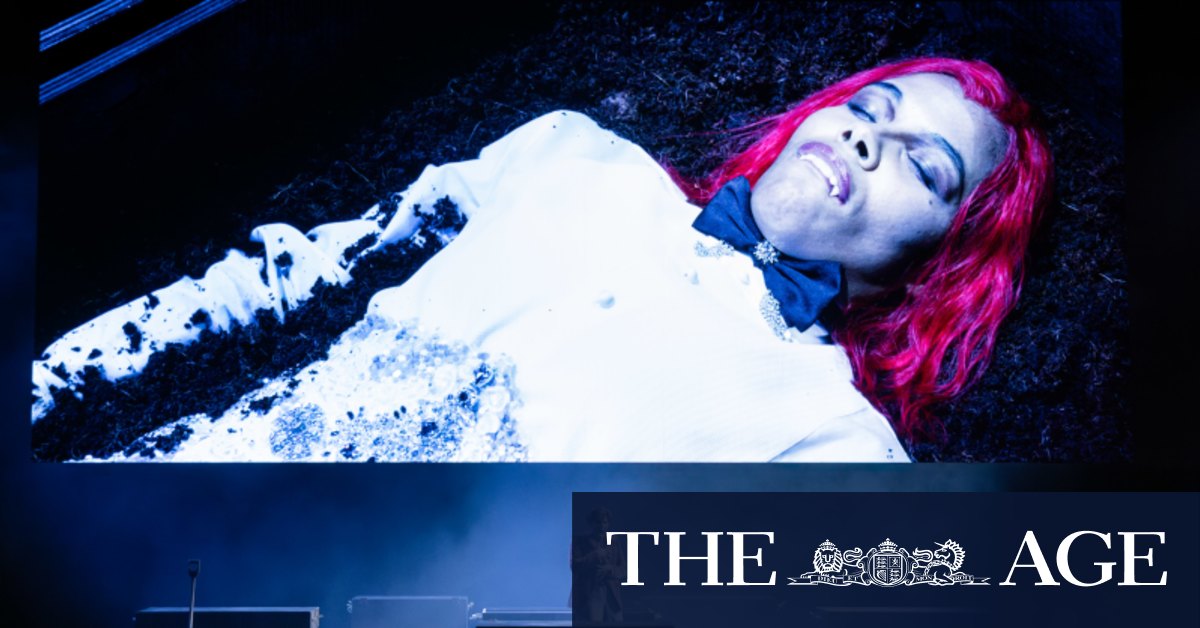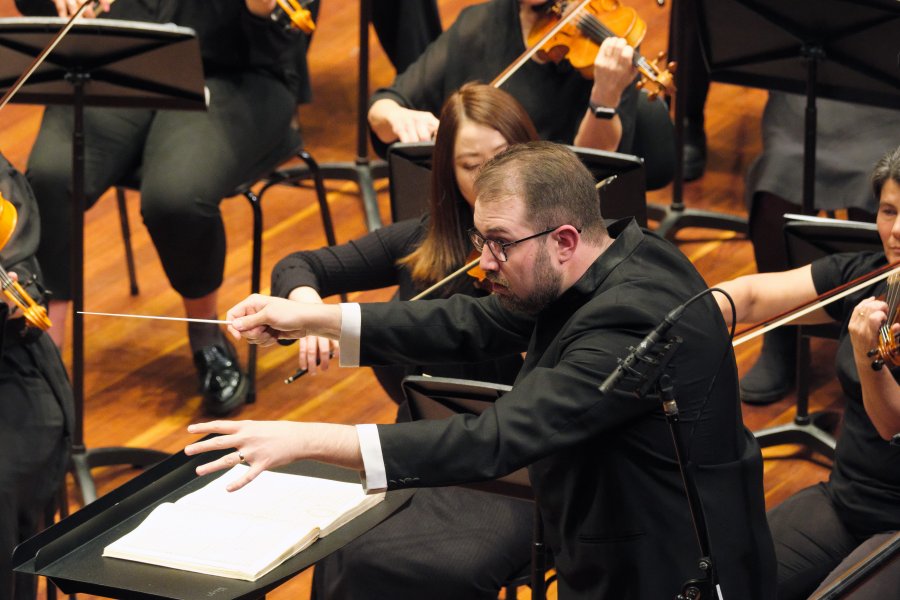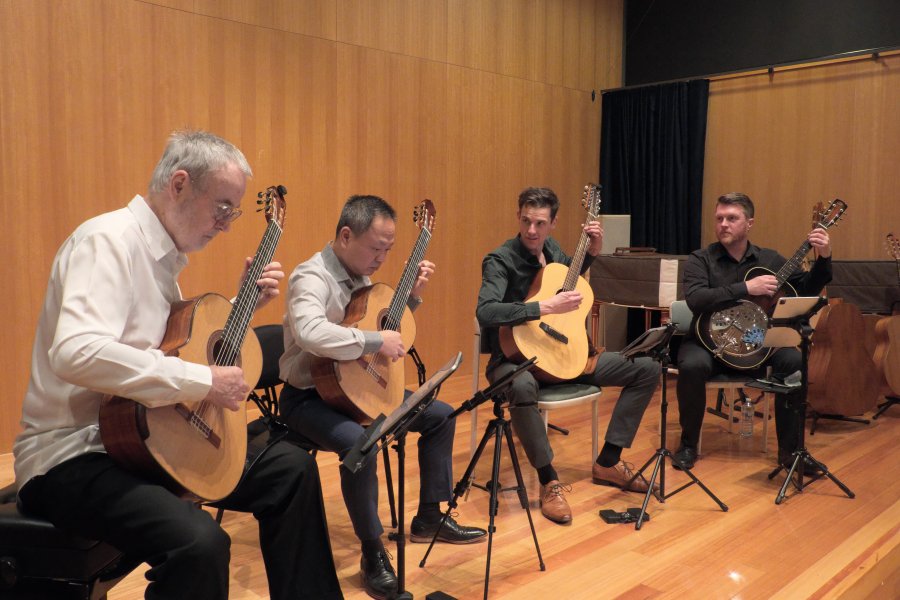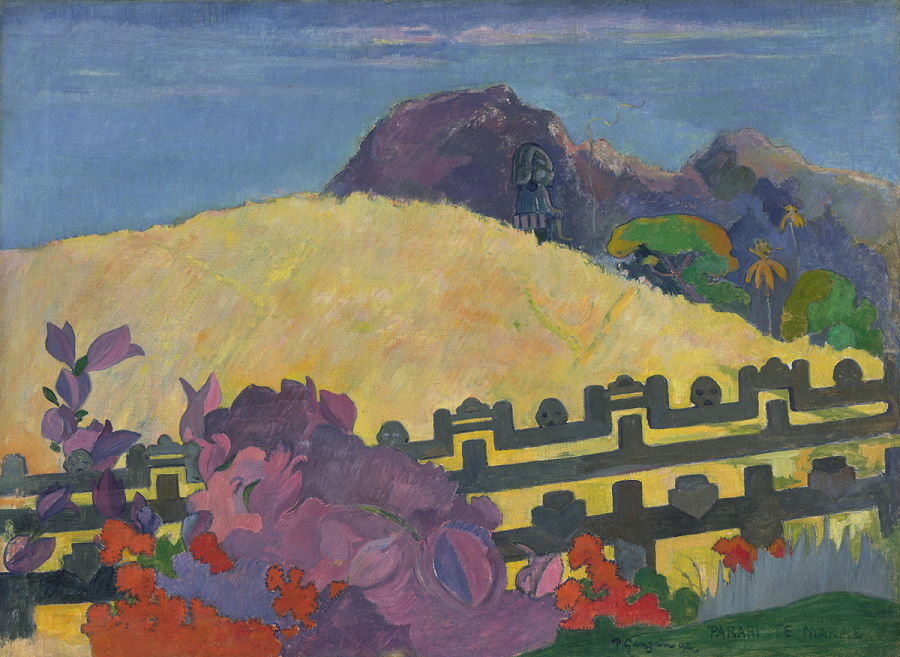
Visual Arts / Gauguin’s World: Tona Iho,Tona Ao. At National Gallery of Australia, until October 7. Reviewed by KERRY- ANNE COUSINS.
This is a scholarly and wide ranging exhibition of the works of French artist Paul Gauguin, curated by Henri Loyrette, former director of the Musée du Louvre and Musée d’Orsay.
Loyrette draws on his deep knowledge of the period to examine the career of Paul Gauguin against the background of 19th century French art. The exhibition includes not only a wide selection of the artist’s well-known paintings and works on paper from Polynesia, but also provides a relevant and thoughtful selection of works from other periods of the artist’s prolific career from 65 private and public collections.
The exhibition opens with a selection of self-portraits and concludes near the end of the exhibition with his last self-portrait.
The earlier self-portraits show a man ill at ease with himself. He depicts himself obliquely looking defensively out of the canvas. In the work (Self Portrait with the yellow Christ) the presence of Christ on the cross (from another painting by the artist) suggests an acknowledgement of the relationship of suffering between Christ and humanity – a suffering the artist may share.
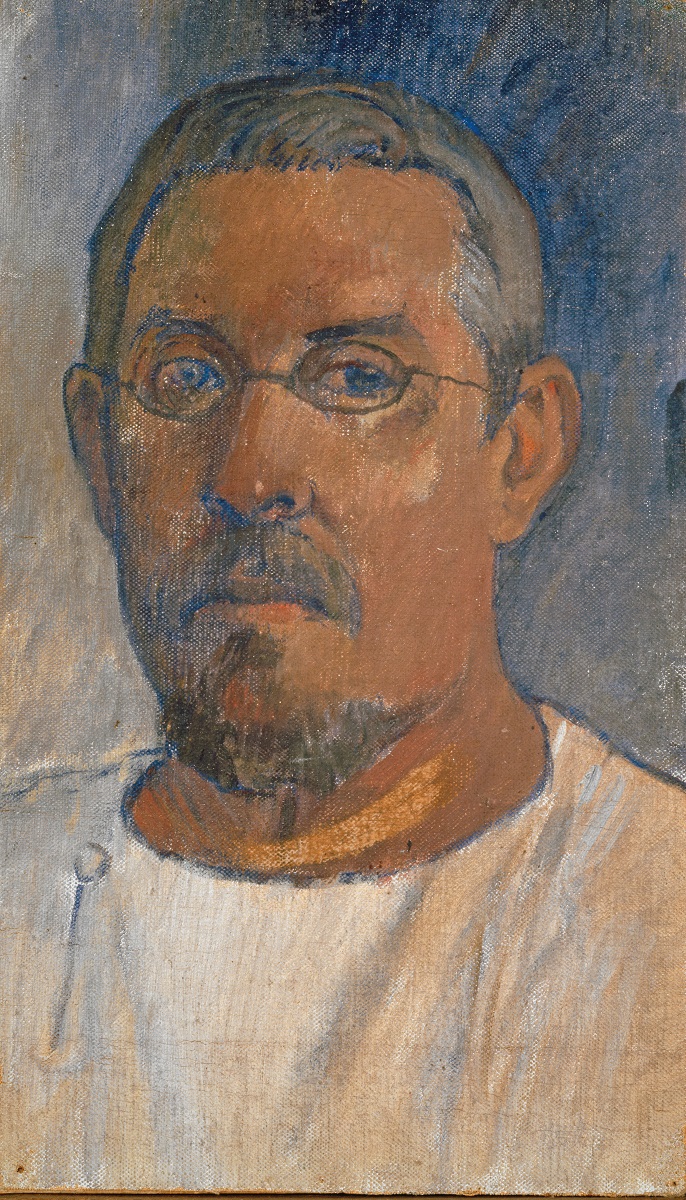
The oldest self-portrait in the exhibition, Portrait of the artist by himself, painted in 1903, is possibly the last known portrait of Gauguin. It is a work where the artist facing the end of his life paints himself sketchily against a simple background bereft of worldly trappings. His expressionless face stares out of the canvas open to the scrutiny of the viewer.
Gauguin was well-travelled. He was brought up in Peru where his family fled in 1849 to escape the political situation in France with the establishment of the second empire under self-styled Emperor Napoleon 111. They returned to France in 1855.
Personal and financial difficulties caused the artist to travel to Martinique in 1887.
He later settled in Tahiti from 1891 to 1895 when he returned to France. He returned again to Tahiti in 1895 but finding Tahiti too expensive and restrictive he moved to the remote Marquesas in 1901 where he died in 1903. The Tahitian part of the story is generally well-known.
The exhibition however includes many works from Gauguin’s stay in Brittany in the late 1880s where he really developed his own style of using thick areas of paint that distinguish his work from the more fluid, light-filled brushstrokes of the French Impressionists.
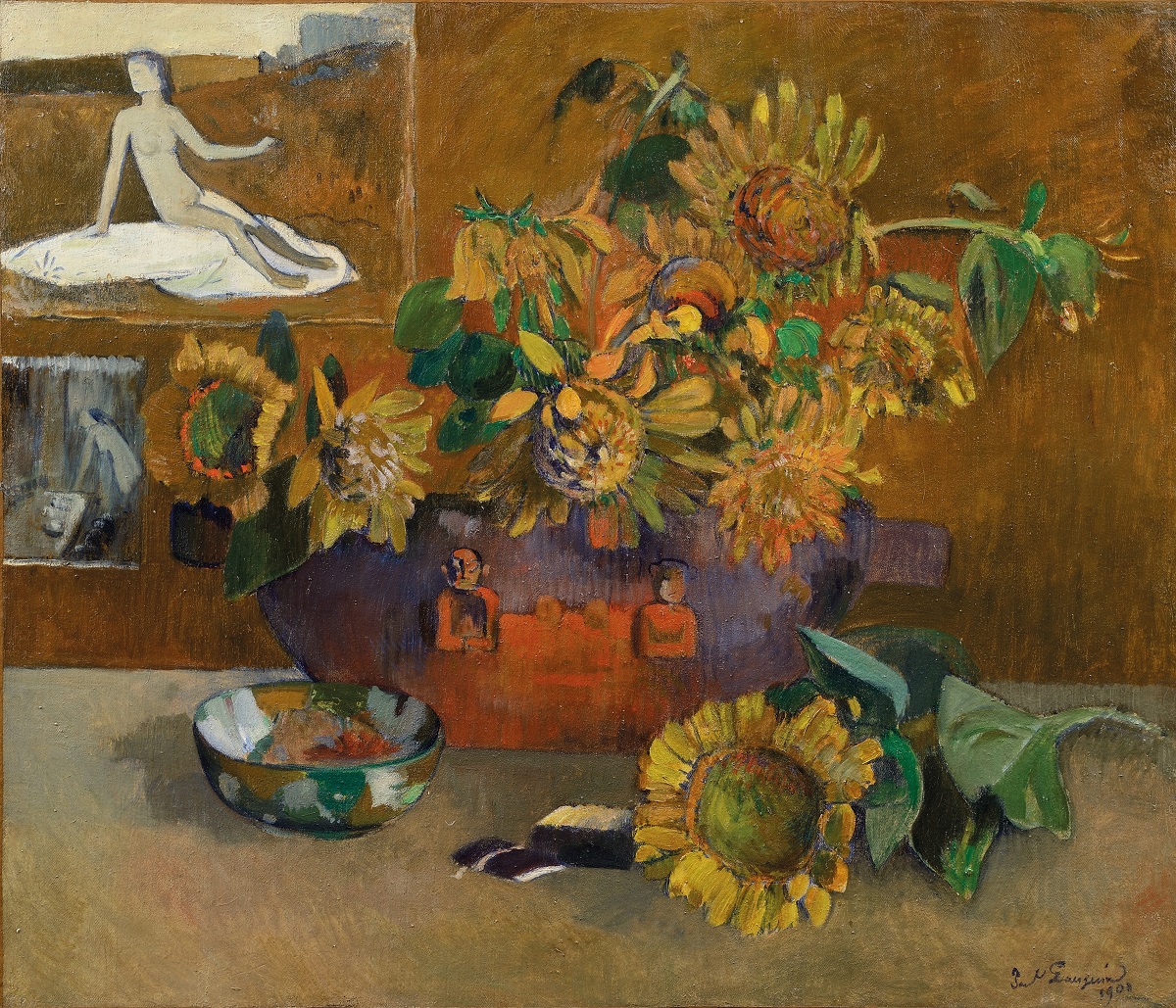
Notable is Gauguin’s palette of rich colours especially the soft glowing reds, yellow ochres and intense greens that he will use throughout his subsequent career and that find their apotheosis in the strong shadows and intense light of the Polynesian islands.
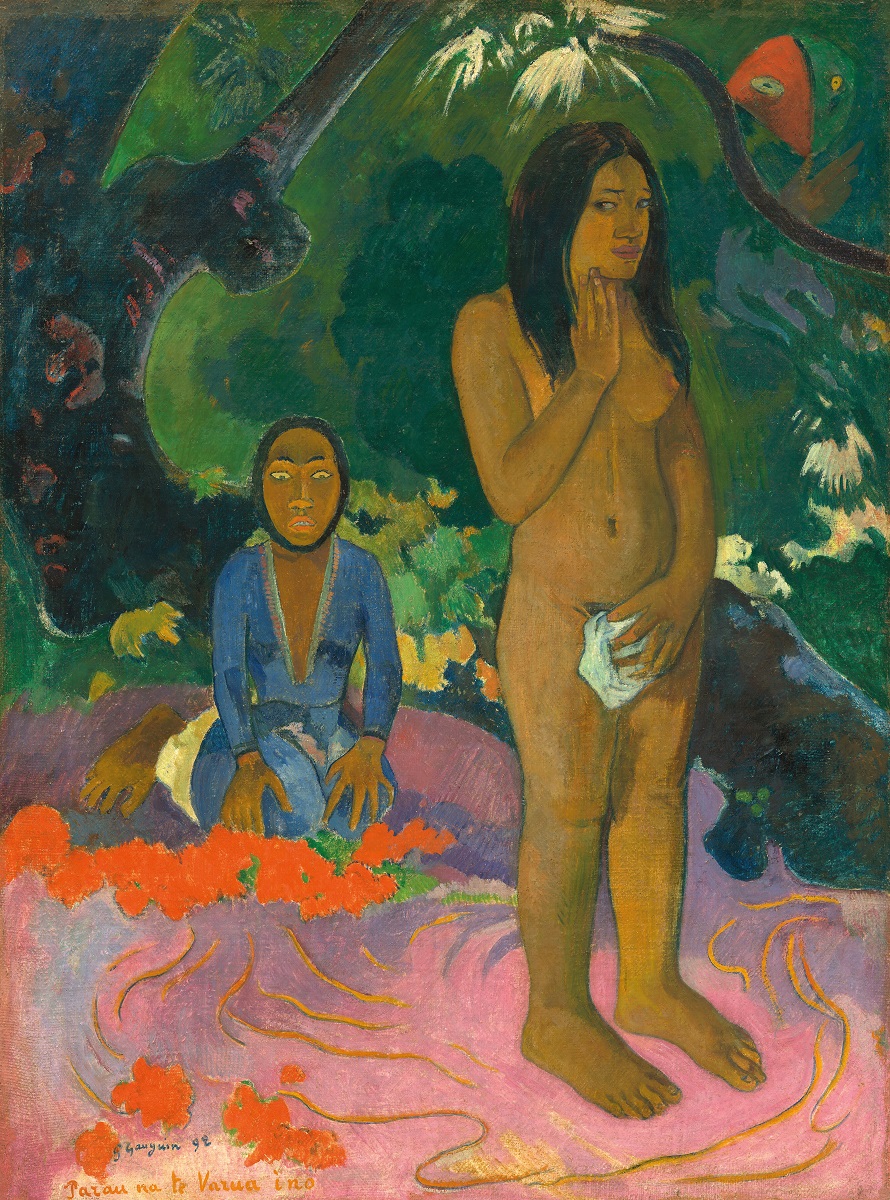
It is also at this time that his works become more mystical and more self-referential. In numerous still life paintings Gauguin includes depictions of the work of artists he admires such as Degas and Delacroix and references through the use of sunflowers, the work of Van Gogh. Later in his Polynesian still life and figure paintings local cultural references also are given a new context.
His paintings of Tahitian women on the beach or figures shown in dark interiors capture the dignity and monumentality of these people in iconic images.
The exhibition’s wide scope also takes in Gauguin’s wood blocks and ceramics that he did in 1886-8 with the help of French potter Ernest Chaplet.
They are accompanied by Gauguin’s delicate little gouache of Chaplet’s stoneware jugs. Modern technology allows us to see a selection of Gauguin’s writings illustrated by his impromptu sketches.
This extensive exhibition demonstrates the many multifaceted nature of Gauguin’s artistic legacy. The man himself remains a problematic and divisive figure.
The exhibition has also been opened out to include events and contemporary representations of the culture of the Polynesian people of the islands where the artist visited and worked.
Who can be trusted?
In a world of spin and confusion, there’s never been a more important time to support independent journalism in Canberra.
If you trust our work online and want to enforce the power of independent voices, I invite you to make a small contribution.
Every dollar of support is invested back into our journalism to help keep citynews.com.au strong and free.
Thank you,
Ian Meikle, editor

